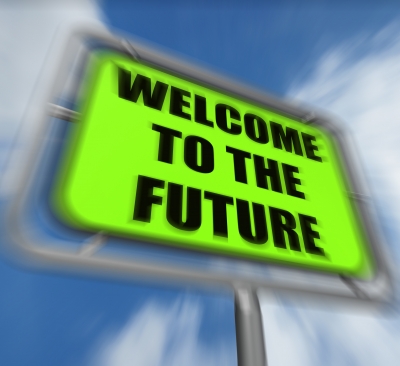Guest Author: Kathy Tito
 As the IT Transformation team debriefs after managing its most recent Catalyst Experience, we thought we’d interview two of the Catalyst Experience Facilitators (Charlie Araujo and John Palinkas) who ran the event while it is fresh in their minds.
As the IT Transformation team debriefs after managing its most recent Catalyst Experience, we thought we’d interview two of the Catalyst Experience Facilitators (Charlie Araujo and John Palinkas) who ran the event while it is fresh in their minds.
Catalyst Experience Events are uniquely designed to take leadership teams (from all levels of the organization) out of their comfort zone and open them to new ideas. They are designed to Shift Mindsets, Create Shared Experiences and Build “Next Generation” Capabilities.
These fun and engaging experiential events borrow heavily from reality TV and game dynamics to create one-of-a-kind shared experiences that bring teams together, shift mindsets and prepare them to tackle a future full of possibilities. But these are not mere “team building events”. This series of seven experiences are built explicitly to “wake-up” your leadership team and then systematically lay the foundation for building the “next generation” capabilities you will need to deliver transformational results to your organization.
So, let’s see if the Catalyst Experience lived up to its promise after a juncture for a new client.
Gentlemen, I’ve just given the highest level description of the Catalyst Experience. In your own words, what exactly is a Catalyst Experience?
Charlie Araujo, Catalyst Experience originator, Founder of ITTI, and Author of “The Quantum Age of IT: Why Everything you Know about IT is About to Change”: A Catalyst Experience is about bringing people together, allowing them to enjoy a shared experience, exposing some deeply-held assumptions and beliefs in the hope that through the experience they will build deeper personal relationships, gain a much deeper understanding of the challenges and opportunities in front of them, and lay the foundation to build new skills and organizational characteristics that will enable them to move forward as a team.
John Palinkas, Catalyst Experience originator, Partner at ITTI, and executive leader of SIM New Jersey: The catalyst experience we just lead was about developing a shared vision for the future operations of the company. Too many times, the vision originates at the top and is never fully embraced by the troops. The Catalyst Experience creates an opportunity for people to step out of their everyday jobs and create a vision for the future state including a road map to help them get there. By participating in its creation, they now have a feeling of ownership and accountability that would not happen otherwise.
How did the Catalyst Experience originate? Where did the “service” and the name come from?
John: The Catalyst Experience is based on a series of Workshops that we have conducted with clients for over 5 years. We took the best of these workshops and combined them into a 3 month engagement that starts with a series of articles and whitepapers to expand the participants’ thought process; followed by an off-site event to build the shared vision and teamwork; and then coaching support for their effort. The name came from the fact that after this experience, we want the participants to view themselves as “Catalysts for Change”.
Charlie: We saw that the greatest barriers to any kind of transformational effort were all interpersonal. Relationships didn’t exist between people who were, in fact, very reliant on each other to provide a service to their mutual customer. There was a massive breakdown in understanding and empathy between groups. The “silos” as we often call them, were iron clad and becoming a major inhibitor to the IT organization’s ability to simply function. We also saw that on a more personal level, IT professionals were being worn down and were stagnating. There was very little new learning or exploration occurring.
So we came upon this idea that we could create fun, experiential events that helped solve these problems. Our hope was that we could help bring people together, break down the silos, create empathy and even a sense of camaraderie and through all of this, we could help to “catalyze” a positive change through this unique, intensive experience. Thus, the name “Catalyst Experience” became kind of obvious to us.
From your personal perspective, thinking about last month’s Catalyst Experience, what were some of the highlights? What did you see that you didn’t expect?
Charlie: While the Catalyst Experience is a “new” offering for us, it’s probably better to think of it as a refinement. While we have been doing events like this for a while, we have just continued to up our game a bit to make them more fun and more participatory, and less workshop-like. But I think that the “highlights” are always the same: seeing people excited about the future, seeing people that are clearly afraid to open up at the beginning volunteering to take the lead by the end, hearing the stories of people who had long, meaningful conversations with people in their own organizations that they would have never had outside of an event like this. It is those small, intangible connections that really plant the seeds to future change and success – and it’s always fun to watch them develop in front of you.
John: I think it was best summed up by one of the participants. He said, “For the first time since I have been with this company, we have a very clear vision of what we want to accomplish and the concrete steps we are going to take. Now it has become real.”
Every time leadership involves the people in creating and implementing a desired future state, the results have exceeded their expectations.
What makes a Catalyst Experience effective for an organization? What are some of the qualities an organization should have in order for it to make the most difference?
Charlie: In almost any size IT organization today, there are two things that conspire to work against it and which stop it from being the most effective organization that it can be: size and silos. There is some management theory that any group of people over 100 creates baked-in dysfunction just due to human nature and the challenges of different personalities, perspectives and objectives. There are many that believe that the “breaking number” is even less than 100. Given that most IT organizations number at least 50 to 100 – and in many cases, much, much more – there is a natural organizational dynamic that works against any IT organization of this size.
In addition, most IT people are technically-oriented by nature and that causes us to easily fall into a silo mentality. That manifests itself both in terms of the organizational structures that we build and, more importantly, in the psychological posture we bring to our relationships – both within IT and between us and our customers. We tend to become very focused on whatever small area of the universe in which we’re assigned and can almost become blind to anything outside of that or bigger than that. We tend to see everything through the prism of our silo perspective. And that stops us from seeing the bigger picture challenges and opportunities that are normally most important to the organization as a whole.
A Catalyst Experience event is designed to very specifically counter these two issues. By orchestrating shared experiences that are pointedly NOT focused on the traditional technology/silo domains, we force a change in perspective, we provide an opportunity to create a new, shared experiential base that can survive to transcend the silos after the event and we create a forum in which true, meaningful relationships can be formed that are based on real challenges and opportunities facing the organization.
John: For any organization to be truly effective, everyone in the organization must go through four phases:
Awareness – Knowledge that things are not working and need to change
Involvement – People want to be part of the change and not have it done to them
Understanding – What needs to change and why it is necessary
Adoption – Embracing and supporting the change
The Catalyst Experience is the first step in creating a team of people who can lead their organization through this type of experience.
But the only way it works, is if the leadership is willing to give up control and let the people participate in the creation of both the future state and the plan to get there.
 The most important thing I have gotten out of the past two days is a really good overview of where we are and where we need to go. For the first time since I have been with this company, we have a very clear vision of what we want to accomplish. It really took all of us coming together and collaborating, having the structure around it, to clearly define the concrete steps we are going to take to achieve that goal. And that has been really exciting for me, because now it’s become real.
The most important thing I have gotten out of the past two days is a really good overview of where we are and where we need to go. For the first time since I have been with this company, we have a very clear vision of what we want to accomplish. It really took all of us coming together and collaborating, having the structure around it, to clearly define the concrete steps we are going to take to achieve that goal. And that has been really exciting for me, because now it’s become real.
Steve Giovanni
Client Delivery Manager
Enterprise Integration




